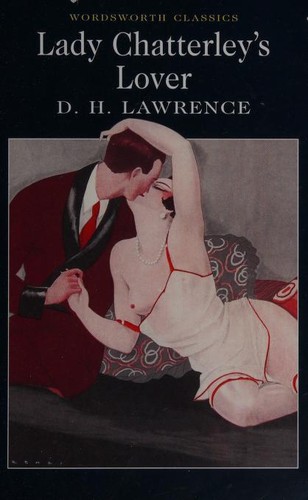Ashwin reviewed Lady Chatterley's Lover by David Herbert Lawrence
Review of "Lady Chatterley's Lover" on 'Goodreads'
3 stars
This review is crossposted from my blog here: daariga.wordpress.com/2017/02/26/lady-chatterleys-lover/
Would you be able to guess what is at the heart of Lady Chatterley’s Lover by looking at its cover or by knowing about the famous obscenity trial that it caused? D. H. Lawrence published this novel in 1928, both the story and its writing being set in the period after the first World War. The writer had to publish it himself since no one back then would print a book which had so much sex and vulgar language. The novel would be freely published only decades later in the 1960s after winning a court battle in England. A similar court trial ensued in India after that for the book.
The lady in question is Connie, a free-thinking woman married off to the Lord of a coal-mining region. The Lord returns injured from the war, unable to physically love or bear his wife any children. Years slowly grind by and the dark grimy coal town surroundings and her monotonous life take a toll on Connie. That is, until a romantic affair slowly takes hold with the gamekeeper of their estate. It seems like they both have similar liberal thinking and he is able to rouse a passion in Connie like she never had before. However, the prudish society they live in and the class divide between them threatens to pry apart their love.
Addressing the elephant in the room, yes, for a novel from before WW2 it is surprisingly free about descriptions of sex, language and reveals quite a lot about the upper class of that generation in England. Like a Merchant Ivory movie, the sensual descriptions and settings are actually pretty nicely done. The real heart of the novel though lies somewhere else. Connie’s love is between a upper class lady and a serving class guy, which was still uncommon for that era. Clifford, her wheelchair-bound husband rails all over the novel against the lower classes rising to be independent and threatening the order of the time. He is quite a bit afraid of the Bolshevist thoughts going around the working classes during that period in England. Mellors, the gamekeeper on the other hand has risen from a collier family through the British army ranks while stationed in India.
Another important actor in the novel is nature. Pages upon pages are devoted to the wooded and flowery beauty of the region that are threatened by the dirty polluting griminess of industry and coal mines. Mellors, living a quiet life in the woods in his cottage represents the face of nature. Clifford is the capitalist, who believes industry and machines are inevitable and that by creating work out of the earth, he is doing good to the working classes. Amidst all this is Connie who floats along like a butterfly, repulsed by the smoke belching buildings and the dreary air they create and loving the flowers and simple life of the countryside.
Lady Chatterley’s Lover might have created quite a sensation in the last century, and beyond its obvious physical lure, I felt that it has quite a bit to offer to the modern reader. Some sections, like Connie’s ride through the coal mining towns are quite an eye opener to the life and times of that period and the effect of bulldozing nature for industry. We witness several cogs in motion in England, with agriculture having given way to industry and industry already giving way to more automation. Many sections seem pertinent even today after a century, which is usually the mark of a good book. We also get a front seat on the divide among the classes and the coming struggle. The book is surprisingly liberal in many aspects that many books even today might hesitate to be. But, what let me down was that the novel is extremely rambling and verbose with the writer going all over the place many times. This is one of those few books where a carefully abridged edition might be a better read.

